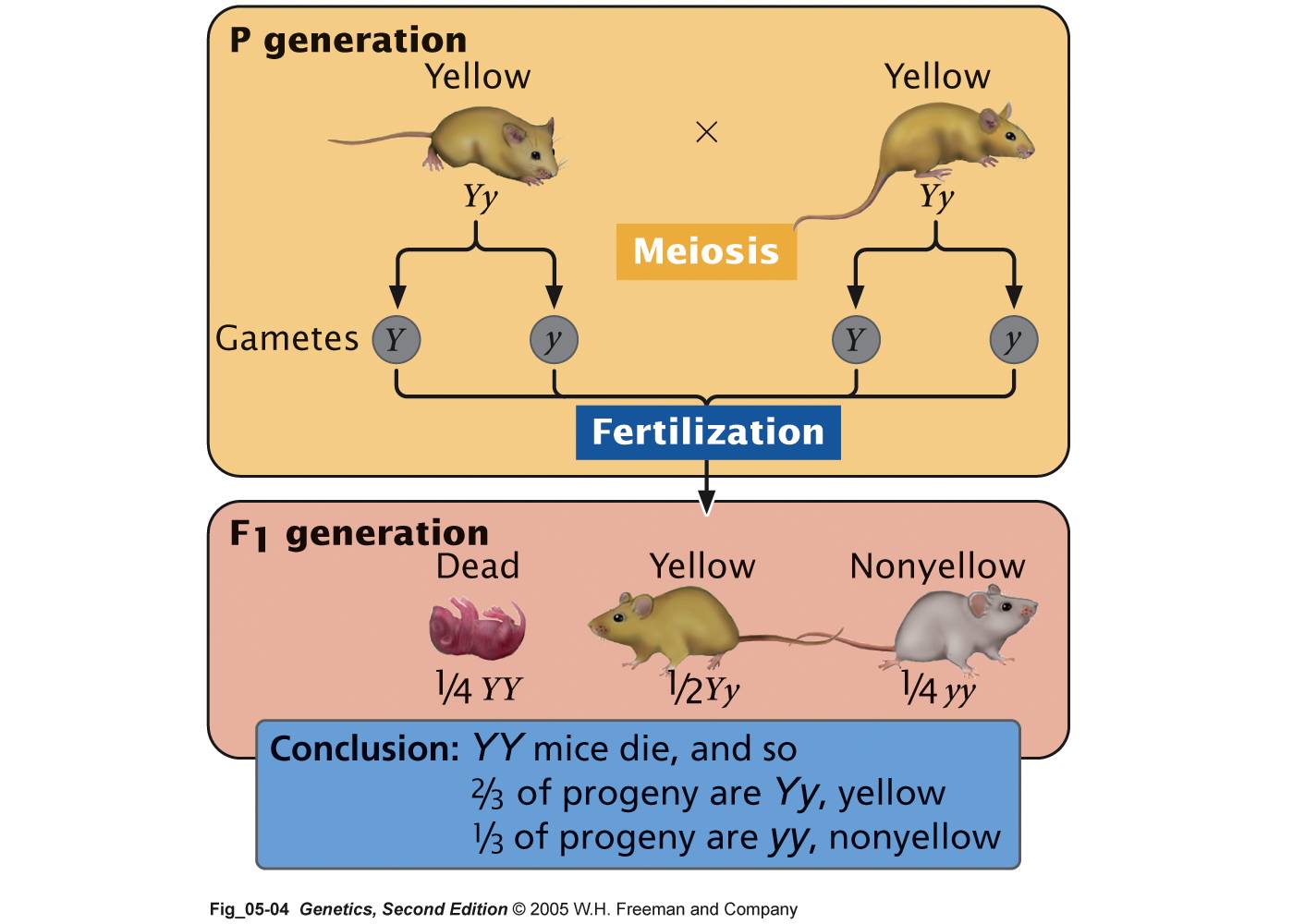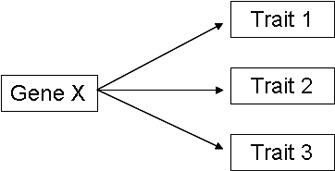One parent, carrying 2 identical alleles, shows one phenotype. The other parent, carrying two different indentical alleles, shows a different phenotype. The offspring, carrying one copy of each of the alleles, shows a third phenotype - usually intermediate between the two parental phenotypes, but clearly distinguishable from either.
 |
| http://bio4esobil2011.wordpress.com/2012/03/04/incomplete-dominance/ |
| http://www.quora.com/If-genes-are-digital-in-replication-meaning-that-when-coupled-white-eyes-and-green-eyes-will-have-either-white-or-green-eyes-how-do-the-children-of-mixed-race-parents-have-skin-colourthat-is-intermediate |
Codominance
In this case, both alleles are equally dominant and both traits will show up equally in the offspring.
The above picture is just an illustration, but this can be seen in real examples, such as the situation with horses and cows, where a white individual (WW) is crossed with a chestnut individual (RR) and the offspring show both. They are called roan (RW).| http://www.biologycorner.com/bio2/genetics/notes_incomplete_dominance.html |
 |
| http://www.buzzle.com/articles/codominance-explained-with-examples.html |
And it is often seen in flowers as well:
 |
 |
 |
| http://igbiologyy.blogspot.hu/2014/03/codominance.html |
Lethal Genes
The basic idea here is that if the alleles are homozygous for a lethal gene, then they cause death. The lethal gene may be dominant, in which case the dominant homozygote dies, or it may be recessive, in which case the recessive homozygote dies.
The following is a very typical example of a dominant lethal gene:
 |
| http://www.cas.miamioh.edu/~wilsonkg/old/gene2005/syllabus.htm |
With a recessive lethal gene, if it is simple dominant recessive inheritance, all the phenotypes will be the same, but if there is intermediate or codominance involved, then once again, a 2:1 ratio will be seen for the heterozygote to homozygote ratio, just in this case the homozygote will be homozygous dominant.
 |
| http://lifestunes.blogspot.hu/2010/12/lethal-white-syndrome.html |
Polygenic Inheritance
Polygenic inheritance refers to a situation where one phenotype is controlled by 2 or more genes.
Difactorial inheritance is the term used when 2 genes control one phenotype, for example the shape of chicken combs.
 |
| http://www.bio.miami.edu/dana/250/250SS13_6.html |
| http://www.extension.org/pages/65363/poultry-genetics-for-small-and-backyard-flocks:-an-introduction#.VDGWBPl_to0 |
Or 9 walnut: 3 rose: 3 pea: 1 single. The ratio of a dihybrid cross, just with one phenotype being dealt with, not 2!
Quantitative Inheritance
This kind of inheritance is observed when many genes are involved in producing a phenotype and the frequency of the phenotypes usually exhibit a normal continuous distribution (aka bell curve). Examples of this include skin colour, hair colour, eye colour, height and weight in humans.
Pleiotropy
| http://bioserv.fiu.edu/~walterm/FallSpring/inheritance/Fall03_lecturea.htm |
Pleiotropy
In this situation, 1 gene is responsible for more than 1 characteristic or trait.
 |
A good example of this in humans is sickle-cell anemia, where one gene causes the cell to have a sickle-shape, which results in many different symptoms, including anemia, skull deformation and enlarged liver and resistance to malaria.
Phenylketonuria (PKU) is another human example caused by a lack of phenylalanine hydroxylase (an enzyme that converts phenylalanine to valine), which results in mental retardation and reduced pigmentation.
No comments:
Post a Comment